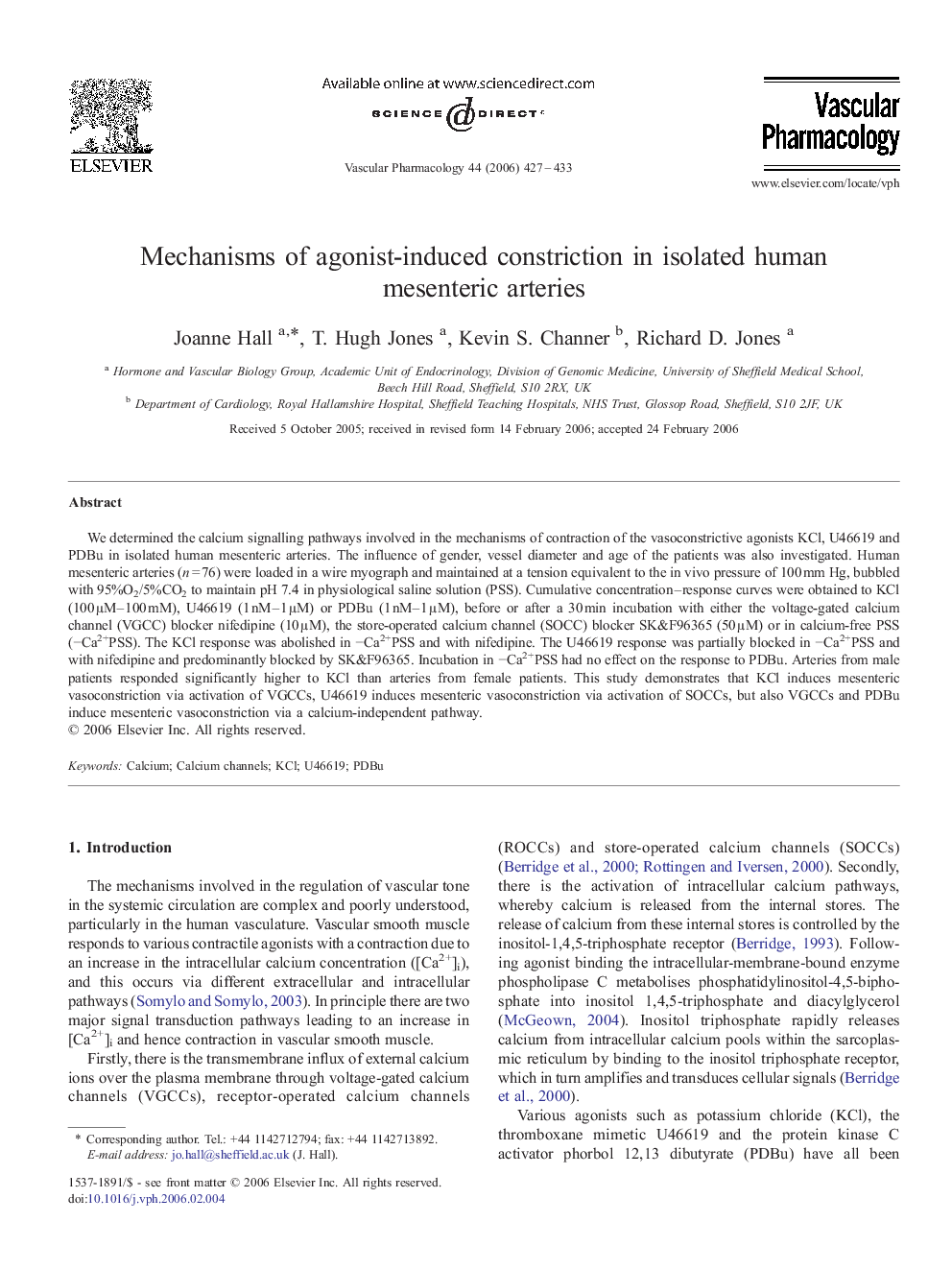| Article ID | Journal | Published Year | Pages | File Type |
|---|---|---|---|---|
| 2574731 | Vascular Pharmacology | 2006 | 7 Pages |
We determined the calcium signalling pathways involved in the mechanisms of contraction of the vasoconstrictive agonists KCl, U46619 and PDBu in isolated human mesenteric arteries. The influence of gender, vessel diameter and age of the patients was also investigated. Human mesenteric arteries (n = 76) were loaded in a wire myograph and maintained at a tension equivalent to the in vivo pressure of 100 mm Hg, bubbled with 95%O2/5%CO2 to maintain pH 7.4 in physiological saline solution (PSS). Cumulative concentration–response curves were obtained to KCl (100 μM–100 mM), U46619 (1 nM–1 μM) or PDBu (1 nM–1 μM), before or after a 30 min incubation with either the voltage-gated calcium channel (VGCC) blocker nifedipine (10 μM), the store-operated calcium channel (SOCC) blocker SK&F96365 (50 μM) or in calcium-free PSS (−Ca2+PSS). The KCl response was abolished in −Ca2+PSS and with nifedipine. The U46619 response was partially blocked in −Ca2+PSS and with nifedipine and predominantly blocked by SK&F96365. Incubation in −Ca2+PSS had no effect on the response to PDBu. Arteries from male patients responded significantly higher to KCl than arteries from female patients. This study demonstrates that KCl induces mesenteric vasoconstriction via activation of VGCCs, U46619 induces mesenteric vasoconstriction via activation of SOCCs, but also VGCCs and PDBu induce mesenteric vasoconstriction via a calcium-independent pathway.
